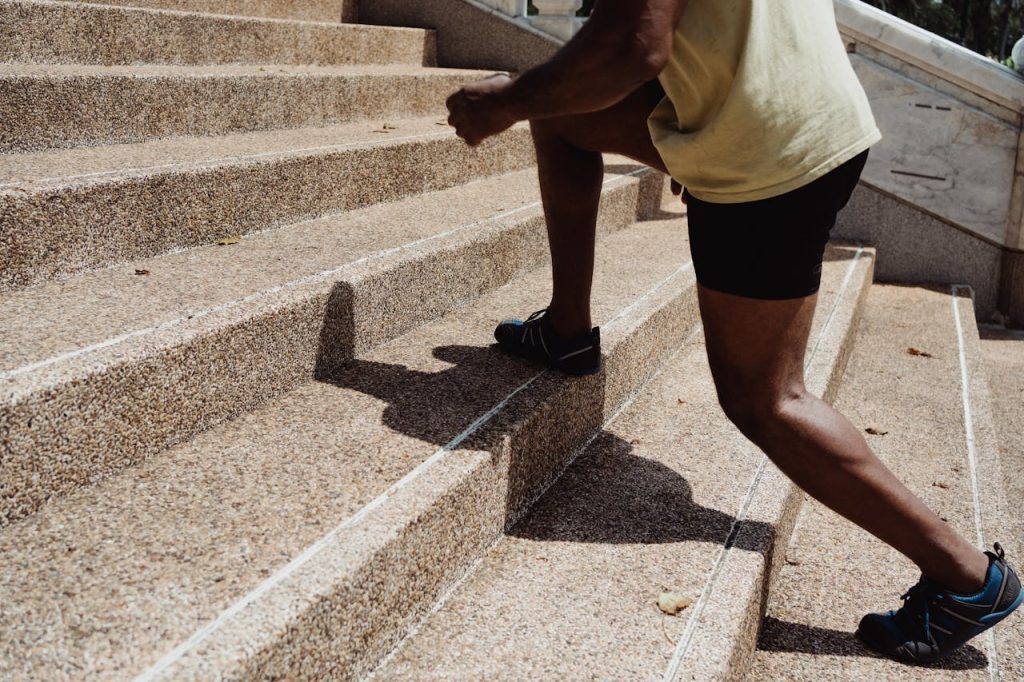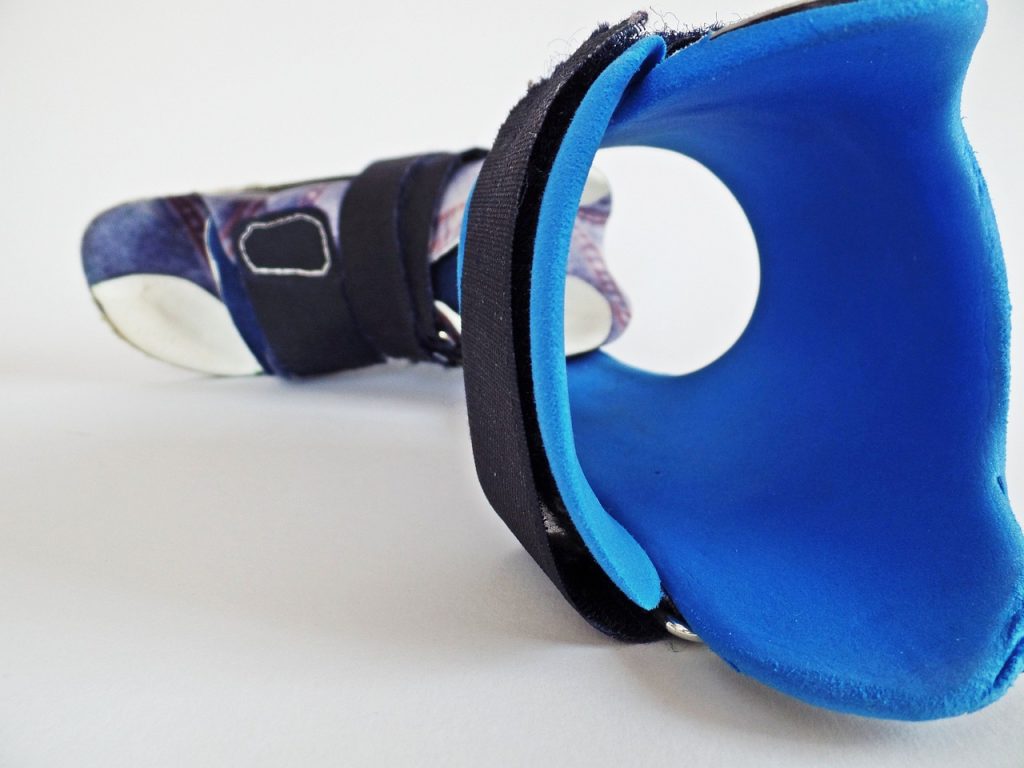Key Takeaways
- Understanding your foot type, pressure points, and body mechanics allows you to select orthotics that target your specific source of foot fatigue, making your everyday life more comfortable and supported.
- Choosing orthotics with appropriate materials, support, and insole volume provides efficient cushioning, long-lasting performance, and a comfortable fit with different footwear and activities.
- By weighing the pros and cons of off-the-shelf versus custom orthotics, you can find the right mix of immediate relief, cost, customization, and long-term gains for your specific needs and lifestyle.
- Keep an eye on the life of your orthotics and replace worn-out inserts to ensure consistent support and avoid additional irritation.
- Visiting a foot specialist is ideal if you are experiencing serious or complicated symptoms, as professional advice will assist you in solving any underlying medical issues and make sure your orthotics fit best.
- Thinking of orthotics as part of a comprehensive foot care strategy, not a quick fix, and pairing them with well-chosen shoes, a slow adjustment period, and targeted exercises maximizes long-term foot health for everyone.
To learn what you should know before buying orthotics for foot fatigue, begin with the fundamentals of foot support, fit, and your everyday requirements. Foot fatigue has its origins in long hours on your feet, hard surfaces, or shoes that aren’t providing much support. Orthotics need to be tailored to your foot size and compensate for your walking or standing style. Materials matter, too—soft foam or firm support suits different needs. While most brands have sizing charts, a good fit is no pinching or slipping. If you have health issues such as diabetes or flat feet, consult a healthcare professional before. Costs and quality vary significantly, so seek transparent reviews and demonstrated efficacy. The meat of this post addresses important advice and major mistakes.
Key Factors For Orthotics
Selecting the appropriate orthotics is not like selecting an insole off the shelf. The proper fit can alleviate foot strain, assist with discomfort from flat feet, high arches, or even post-surgery. There are a few key things you want to consider when purchasing orthotics: comfort, support, your day-to-day needs, and compatibility with your shoes.
Material Matters
Material selection influences how orthotics perform and wear. Foam is light and soft, great for light cushioning, but it breaks down faster. Memory foam contours to your foot, providing a comfortable fit for those with tender pressure areas or corns. Gel inserts provide shock absorption, in particular, for individuals with heel pain or those who stand for extended periods. Heat-moldable materials provide a more custom fit. For diabetics or those with sensitive feet, soft, breathable layers minimize rubbing and prevent moisture accumulation, reducing the possibility of blisters or ulcers.
For sport or high-impact use, a firm base—frequently EVA or plastic—can assist in retaining shape longer. Select breathable ones if you tend to sweat or live in warm climates. The best material for you depends on your feet and your daily activities.
Support Level
Support requirements vary with your foot type and activity. Rigid orthotics, constructed from hard plastic, maintain foot joints in a stable position—ideal for flat feet or post-knee or back surgery. Flexible ones, with less structure, work for mild pain and daily wear. Firm arch support cures plantar fasciitis and Achilles heel pain. Too much firmness can feel uncomfortable if you have sensitive feet, so balance is key.
Custom orthotics can address pressure points and posture. They are typically returned every couple of years to continue functioning optimally.
Insole Volume
High-volume insoles add extra cushion but can be shoe crowds. This can affect shoe fit, occasionally requiring a larger size. Low profile insoles are slim, molding to tight footwear or dress styles without exerting pressure. ALWAYS verify the fit with your DAILY shoes — a bad fit can exacerbate fatigue!
A complete foot evaluation, consisting of arch height and pressure mapping, enables selection of the ideal insole contour and sizing.
Activity Use
Overall, lifestyle kills, and orthotics work wonders. Runners require shock-absorbing, stable insoles. Those who stand for hours require both solid support and padding. For sports, seek out versions designed for each activity—running, walking, or hiking—since each places different stress on the feet.
Custom orthotics can enhance performance or reduce injury risk if aligned with your gait.
Your Footwear
Orthotics that have to fit your shoes. Certain shoes, such as boots or sneakers, contain more space for beefier insoles. Dress shoes usually require thin, low-volume inserts. Orthotic-friendly shoes help you to more comfortably keep inserts in each step. Worn-out, poorly fitted shoes can reverse orthotic magic.
When To See A Professional
Knowing when to consult a podiatrist is crucial before purchasing orthotics for foot fatigue. A lot of people assume foot pain is normal. Pain is not normal. If pain lingers as you ambulate or weigh, or if it prevents you from working or everyday activities, it’s time to consult a professional. Pain that won’t subside after a few days of rest is also a concern. If you notice swelling, redness, or experience stabbing pain in your heels or arches, that’s a red flag. Ditto for pain that sneaks into your knees, hips, or back, as these commonly trace back to foot issues.
Certain conditions make the professional necessity even more obvious. If you’re blessed with either high arches or flat feet, then your feet don’t move properly, which can place additional stress on the other parts of your body. A podiatrist examines your foot shape and indicates if custom orthotics can assist in controlling foot joint movement, alleviating stress on other joints. Those with heel pain, tight Achilles tendons, or a recent lower limb injury that alters their gait should be evaluated. Custom orthotics can help equalize pressure and promote healing, particularly if an injury impacts your stride.
Medical conditions such as diabetes can increase the stakes. If you’re diabetic, foot care is vital. Due to diabetic foot problems like neuropathy and poor circulation, it’s easy to overlook wounds or blisters. A professional can examine you for underlying issues and recommend orthotics that reduce the risk of ulcers or other complications. Ditto if you’re unsteady on your feet or stumble frequently, or if you are obese. Additional pounds add extra pressure to your feet, which can cause pain or injury if not controlled.
A podiatrist or foot specialist provides more than advice—they can spot problems early, recommend the right kind of orthotics, and ensure any underlying issues get addressed, not just covered up with inserts. Seeking professional advice is a wise choice to ensure you receive orthotics that suit your requirements and maintain your foot health in the long run.

The Adaptation Period
Grabbing orthotics to fight foot fatigue is not a band-aid. Your body has to adapt to the new form and support. The initial days or weeks of orthotic wear can introduce new sensations. Most experience mild soreness or some discomfort. This is natural. The feet, ankles, and even the legs may ache or feel sore as they adapt to improved assistance. The adaptation period varies. For some, it’s a few days, for others, it’s a week or two. The trick is being aware that this period is normal and tends to dissipate as your body adjusts.
In the beginning, some will detect strange pressure points or altered wear patterns. Some aches are normal; stabbing or persistent aches are not. This is because orthotics alter how the foot sits and moves. They provide new support and change how weight is distributed. When the body’s accustomed to its old ways, this shift requires work. So your muscles and joints have to learn a new way of working. This may result in some aches, slight swelling, or even additional fatigue in the feet at the onset.
To aid in your body’s adaptation, it’s best to wear the orthotics for brief durations initially. Start with one to two hours a day, and gradually increase. This gets the feet acclimated to the new sensation without overdoing it. If pain is intense or doesn’t subside after a couple of weeks, it’s smart to consult a podiatrist. Sometimes the fit just needs to be adjusted, or a different cut is more suitable. The type of orthotic, your foot shape, and your activity level can all alter the length of this period. If you walk or stand a lot, you might need more time to adapt than a more sedentary individual.
Debunking Orthotic Myths
Here are some of the top myths surrounding orthotics for foot fatigue and why you may be missing out! There are a lot of myths surrounding who needs orthotics, how they function, and what results you can anticipate. By eliminating confusion, it allows consumers to be more educated and avoid frustration.
A Quick Fix
Orthotics are not a magic eraser that eliminates foot fatigue overnight. They’re just one piece of a larger foot care strategy. If you have persistent foot pain, you should be seeking out underlying causes such as bad shoes, weak foot muscles, or high-impact activities. Missing this step can result in short-term relief and long-term frustration.
Folks get the best results by pairing orthotics with other treatments. Stretching, strengthening, and sometimes physical therapy keep the feet strong and mobile. Stick with it. For instance, combining your daily orthotic wear with doing calf stretches and toe curls can reduce pain and prolong your activity.
One Size Fits All
It’s an error to believe any orthotic works for everyone. Feet are all different shapes and sizes, and therefore everyone is different. If you have flat feet, you may require additional arch support, but if you have high arches, you may require additional padding. Experimenting with different styles or even custom designs is usually required.
Preference, as well, is important. You can’t please everyone with orthotic preferences; some folks like rigid insoles, while others desire cushiony soft fabrics. Foot conditions like diabetes or neuropathy only further complicate things. For instance, those with neuropathy may require a well-fitting shoe that doesn’t limit mobility too much. Trying on options and consulting a specialist can spare you time and headaches.
Only For Athletes
Orthotics aren’t just for runners or sports enthusiasts. They assist individuals from all lifestyles, from desk jockeys who remain seated for hours on end to seniors facing age-related foot transformations. Anyone with tired feet or a complaint could probably use orthotics, not just those with major issues. Kids with flat feet may require them, and kids don’t always outgrow these issues.
Studies are now revealing how orthotics can boost muscle activation while walking, and even mild or pain-free individuals can use them preventatively. Easy-to-implement foot support can make life better every day.
Weaken Your Feet
Others fear orthotics will weaken their feet. Studies show the opposite: insoles can encourage healthy muscle use, not stop it. For those mending from injury, orthotics help offload strain and accelerate recovery without sapping strength.
To maintain foot strength, complement orthotic use with daily foot exercises. For instance, standing calf raises or towel scrunches are easy options to maintain foot muscle engagement while wearing orthotics daily.
Don’t worry if new insoles feel weird at first—allow them a break-in period.
Conclusion
In order to select the appropriate orthotics, you need to understand your feet and the origin of their pain. STEPS: take a look at your everyday steps, the ground you walk on, and your shoes. Custom orthotics are best for uncommon requirements. Over-the-counter ones assist with light discomfort or temporary use. If pain persists or worsens, consult a physician. Orthotics need time to feel right, so break them in slowly. Bypass myths—one pair doesn’t fix every foot. Believe solid information, not advertising hype. A lot of people feel less tired once they get fitted. If you want to get ahead, try a few pairs and note what provides comfort. Tell us your story or inquire in the comments below. Your steps count, and your comfort does, too.
Frequently Asked Questions
1. What Causes Foot Fatigue, And How Can Orthotics Help?
Foot fatigue is often caused by prolonged periods of standing or walking, bad shoes, or poor foot structure. They give your feet support and cushioning, which helps to alleviate strain and increase comfort.
2. Are Custom Orthotics Better Than Off-The-Shelf Options?
Custom orthotics are made for your feet and your specific needs, meaning they provide superior support. While store-bought orthotics can alleviate mild cases, they cannot address unique foot issues.
3. How Do I Know If I Need Orthotics For My Foot Fatigue?
If you suffer from persistent foot aches, fatigue, or discomfort in otherwise well-fitted shoes, orthotics might be able to provide you with relief. See a specialist for evaluation.
4. How Long Does It Take To Adjust To New Orthotics?
It typically requires a week or two of adjustment. Begin wearing them for limited periods and build up as your feet adapt to the insert.
5. Can Orthotics Completely Cure Foot Fatigue?
Orthotics can alleviate symptoms and enhance comfort, but they won’t always be a cure. Proper footwear and foot care can’t be overlooked for long-term relief.
6. When Should I See A Professional About Foot Fatigue?
If your foot fatigue lingers or intensifies or impacts your quality of life, visit a podiatrist or healthcare professional. Intervening early prevents complications.
7. Are There Any Common Myths About Orthotics I Should Know?
Yes. Myth: Orthotics are for old people. Anyone can benefit if they have foot fatigue or alignment problems.
Say Goodbye To Tired, Aching Feet With Orthotics For Foot Fatigue From The Shoe Doctor!
If standing all day leaves your feet burning, sore, or completely drained, orthotics for foot fatigue may be exactly what you need to stay comfortable, supported, and energized. Long hours on your feet can lead to muscle strain, poor alignment, and stress on your joints. Our custom orthotics help evenly distribute pressure, support your arches, and improve posture, so every step feels lighter and more stable.
At The Shoe Doctor, we bring over 20 years of experience crafting orthotics that target the root causes of fatigue. Russell uses advanced 3D foot-mapping technology to measure your unique foot structure and gait, allowing us to create precision-fit orthotics designed for maximum relief and all-day comfort. In partnership with the Spine & Injury Medical Center in San Jose, we take a full-body approach to foot health, helping you move better and feel better every day.
If you’re in the South San Francisco Bay Area, trust The Shoe Doctor for expert-made orthotics that fight fatigue and protect your long-term mobility. Schedule your free consultation today and take the first step toward pain-free movement and renewed energy.
Disclaimer
The materials available on this website are for informational and entertainment purposes only and not to provide medical advice. You should contact your doctor for advice concerning any particular issue or problem. You should not act or refrain from acting based on any content included in this site without seeking medical or other professional advice. The information presented on this website may not reflect the most current medical developments. No action should be taken in reliance on the information contained on this website and we disclaim all liability for actions taken or not taken based on any or all of the contents of this site to the fullest extent permitted by law.


